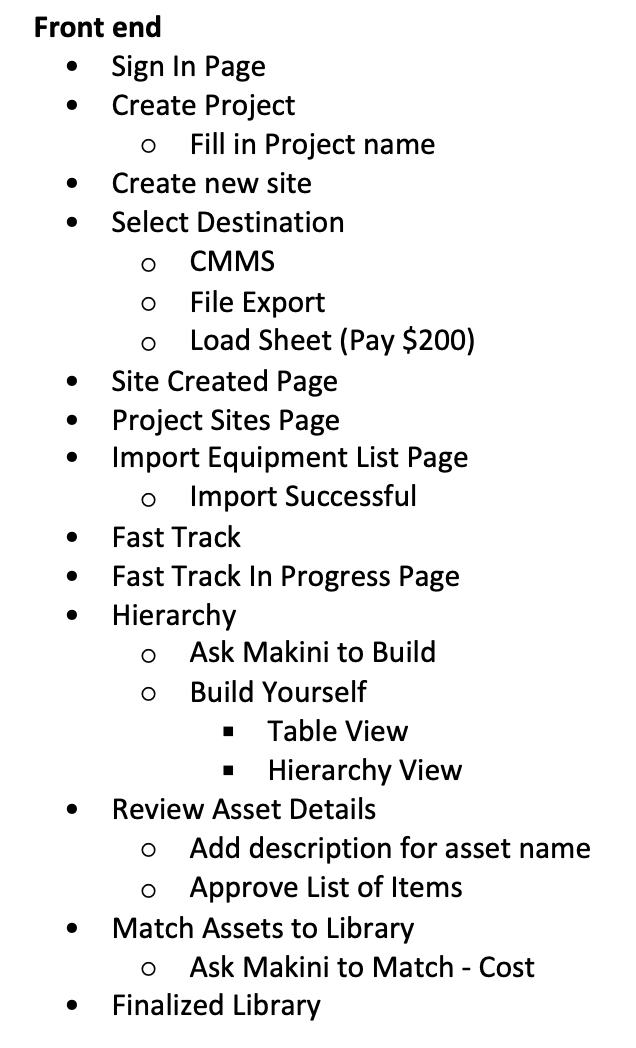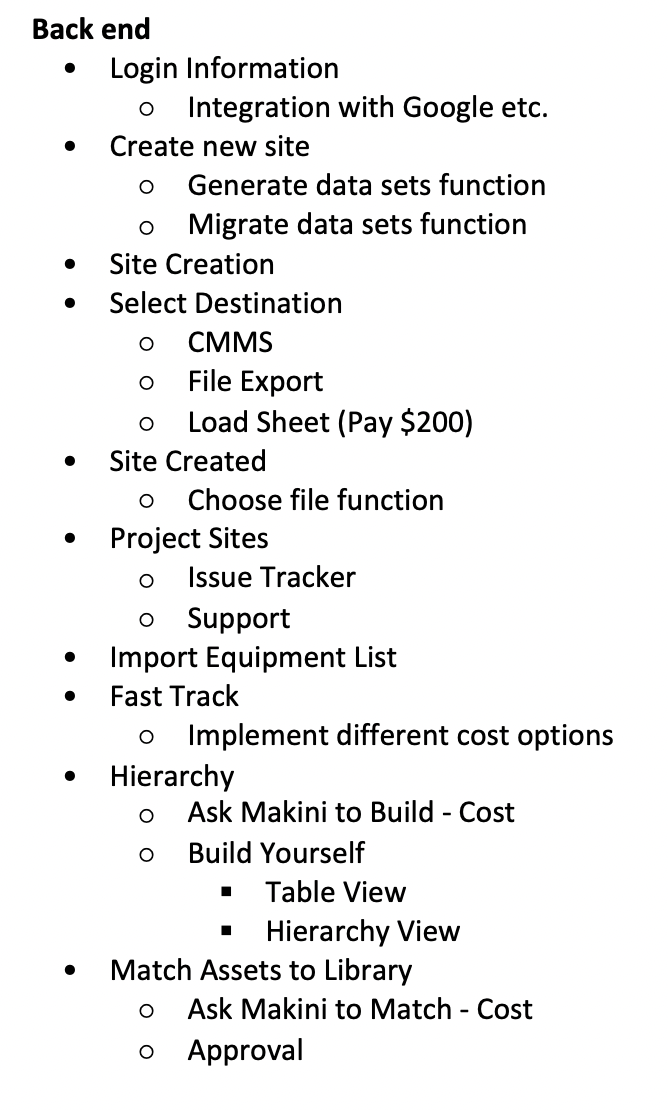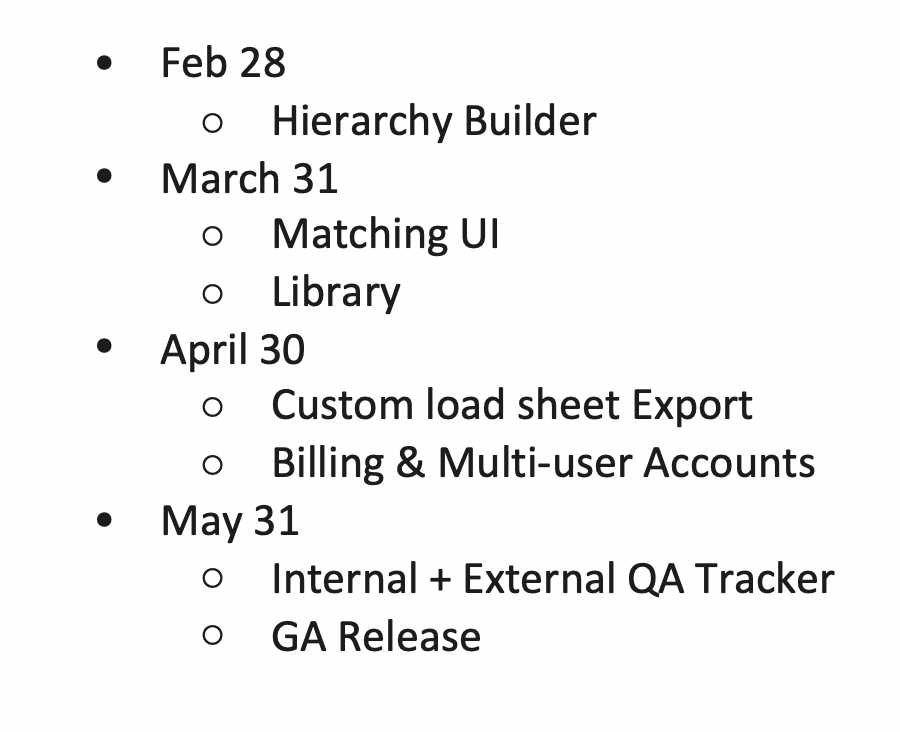



2. Ideate, Prioritize and Build the MVP:
In ideation, I listed down pages and features we would need for the solutions that would address the users' pain points.


Initial Product Roadmap:

I worked with design to build an initial prototype for feedback. After, I released a survey to collect feedback for iteration.
I received very valuable and actionable insights from this survey. Hierarchy Builder, Matching, and Operations Dashboard were the top 3 features internal users believed needs the most improvement.
Challenges: Datafac is a newer revenue line that has less customers, but has bigger deals. There are very few customers we are able to interview and talk to. This made it difficult to garner user insights. However, our internal users have a ton of experience working in datafactory services and can tell us what they are looking for. This is a product that internal users are very excited by as well, and would use in day to day operations.
Prioritization: Many of our internal users and stakeholders have a lot of feedback and features they want. I have to prioritize all of the features to make sure we’re utilizing engineering and design resources correctly. There were some user suggestions I was unsure about that resonated with the rest of our users. To better define and prioritize product features on the product roadmap, I created a survey to help prioritize. I went through each item and looked at impact, as well as effort.
I prioritized features that were blocking operations from working on a current client project for data migration since the business priority is revenue. The tradeoff was that we couldn't work on features like export and more, since they were not needed for the projects yet.
3. Iterate on the Solution
After we launched the MVP, there was an influx of bugs and suggestions since we were in the iterative stage. In order to manage all of these different interests, I engage with each stakeholder directly. I listen and drop down what everyone has to say and ask clarifying questions, and utilize the 5 Why's framework in order to fully understand. I created user stories and solutions for each point, then I prioritized each backlogged item by impact, effort, must-haves and wants.
Doing this allowed me to get a clear view of the most important items, and I shared my findings in the team stand-ups to build consensus across stakeholders. I find that explaining your plans starting from big picture goals and timelines and working down to more minor problems worked best. Visually showing the product roadmap and the prioritization table I created for backlogged items allowed stakeholders to understand the tradeoffs that are being made and why.

Key Product Features:
1. Hierarchy Builder - Build, Assemble
2. OEM Library - Match, Inject
3. Direct Injection - Easy Export
With Master Library, you can build and assemble equipment, standard jobs, and parts ever-growing with every new populated vessel across the industry.
Self-serve Hierarchy Builder allows users to build their own hierarchies while matching assets to our library. Users can request sourcing, or parsing for missing assets. QA and edit data on the spot.
Direct Injection into any CMMS environment or any other system from scratch.
User Value Props:
1. Quality
2. Speed
3. Unit Economics
Vision: To make data generation and migration services as automated and seamless as possible.
Datafac created $450k in reccuring annual revenue. The product improved data implementation workflow by 88%.
Later on, Datafac was acquired for a private amount and is helping many more customers export high quality data!
If you like what you see and want to work together, get in touch!
joycechan214@gmail.com